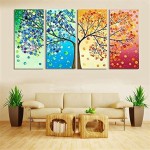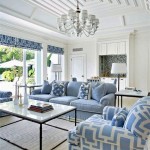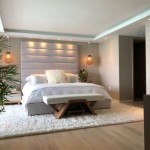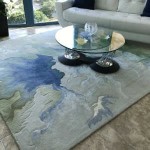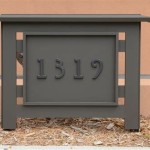Decorating a Long Narrow Living Room: Maximizing Space and Style
Long, narrow living rooms present unique decorating challenges. These spaces often feel cramped and disproportionate, potentially hindering both functionality and aesthetic appeal. Effective design solutions involve strategic planning and thoughtful implementation of various elements, from furniture selection to spatial arrangement, to create a comfortable and visually balanced environment. The key is to visually shorten the room and maximize the usable space without making it feel more constricted.
The principles guiding the successful decoration of a long, narrow living room revolve around perception management and efficient space utilization. It is imperative to consider the flow of movement, the visual weight of objects, and the impact of light and color on the overall ambiance. This article will explore practical strategies for transforming this challenging layout into a welcoming and functional living space.
Breaking Up the Length Visually
One of the primary objectives in decorating a long, narrow living room is to visually diminish its length. The perception of disproportion can be minimized by dividing the room into distinct functional zones. This can be achieved through a variety of methods, creating visual breaks and points of interest that disrupt the linear flow.
Furniture placement plays a critical role in defining these zones. Instead of lining all the furniture along the walls, consider arranging furniture groupings that float within the space. For example, a seating area can be defined by an area rug and anchored by a coffee table, creating a focal point and visually separating it from other areas, such as a reading nook or a workspace. An L-shaped sectional sofa can also be strategically placed to delineate the seating area and break up the straight lines of the room. Avoid pushing all furniture against the walls, as this will only accentuate the narrowness.
Area rugs are invaluable tools for defining zones and adding visual interest. Use different rugs to delineate different areas, such as a brightly patterned rug under the seating area and a more muted rug in a reading corner. The rugs can also introduce color and texture, further enhancing the visual separation.
Color blocking is another effective technique. Using contrasting paint colors on different walls can visually shorten the room. For example, painting the shorter end walls with a darker, warmer color than the longer side walls will make them appear closer, effectively reducing the perceived length of the room. Vertical stripes on the longer walls should be avoided, as they will only emphasize the height and length. Horizontal stripes, on the other hand, can help to widen the space visually, but use them sparingly to prevent overwhelming the room.
Strategic placement of artwork and mirrors can also create visual breaks. Hang a gallery wall on one of the shorter end walls to draw the eye and create a focal point. Large-scale artwork can also have a similar effect. Mirrors, particularly those placed on the longer walls, can reflect light and create the illusion of more space. However, avoid placing mirrors directly opposite each other, as this can create a disorienting tunnel effect.
Bookshelves and room dividers are functional and aesthetically pleasing ways to define zones. A bookshelf can act as a partial barrier, separating the seating area from a dining space or a home office. Opt for open bookshelves that allow light to pass through, preserving a sense of openness. Room dividers, such as folding screens or curtains, offer more flexibility and can be easily adjusted to suit your needs. They provide visual separation while still allowing light and air to circulate.
Optimizing Furniture Selection and Placement
The selection and placement of furniture are crucial considerations when decorating a long, narrow living room. The goal is to choose pieces that are appropriately scaled to the space and arranged in a way that maximizes functionality and flow without overcrowding.
Avoid bulky, oversized furniture that can overwhelm the room. Instead, opt for pieces with clean lines and a streamlined profile. Sofas and chairs with exposed legs will allow more light to pass through, creating a sense of airiness. Modular sofas offer flexibility and can be easily reconfigured to suit your needs. Consider a smaller sofa combined with accent chairs to provide ample seating without taking up too much space.
Multi-functional furniture is particularly valuable in small spaces. Coffee tables with built-in storage can help to keep clutter at bay. Ottomans that can be used as footrests, extra seating, or even temporary tables are also practical choices. Wall-mounted shelves and cabinets can provide storage without taking up valuable floor space.
When arranging furniture, prioritize creating a clear pathway through the room. Avoid obstructing doorways or walkways. Place the largest pieces of furniture along the longer walls to free up space in the center of the room. Consider leaving some negative space around furniture groupings to create a sense of openness and prevent the room from feeling cramped. Experiment with different furniture arrangements to find the optimal layout that maximizes both functionality and visual appeal.
Consider the placement of lighting fixtures. Avoid placing lamps directly behind furniture, as this can create shadows and make the room feel smaller. Instead, use a combination of floor lamps, table lamps, and overhead lighting to create a layered lighting scheme. Task lighting, such as a floor lamp next to a reading chair, can help to define specific areas within the room. Dimmable lighting allows for adjusting the ambiance to suit different moods and activities.
Scale is paramount when choosing accessories. Large, impactful accessories can create focal points and add visual interest without cluttering the space. Overly small accessories can get lost in the room and contribute to a feeling of disarray. Consider a few carefully chosen art pieces, sculptures, or plants to enhance the overall aesthetic without overwhelming the space.
Maximizing Light and Color
Light and color play a vital role in shaping the ambiance of any room, and they are particularly important in long, narrow living rooms. Maximizing natural light and choosing the right color palette can significantly enhance the sense of space and create a more inviting atmosphere.
Maximize natural light by keeping windows unobstructed. Avoid heavy curtains or blinds that block sunlight. Sheer curtains or lightweight shades can provide privacy while still allowing ample light to filter through. Consider adding mirrors strategically to reflect light and brighten up dark corners. Position mirrors opposite windows to maximize their effect.
A light and airy color palette can make a room feel more spacious. Opt for neutral colors, such as whites, creams, and light grays, for the walls. These colors reflect light and create a sense of openness. Introduce pops of color through accessories, such as pillows, rugs, and artwork. Lighter colors on the ceiling can make the room feel taller.
Accent walls can be used strategically to add visual interest and break up the monotony of a long, narrow room. Consider painting one of the shorter end walls a bold color to draw the eye and create a focal point. Alternatively, use wallpaper with a subtle pattern to add texture and visual interest without overwhelming the space.
Avoid using dark colors on the longer walls, as this can make the room feel even narrower. Dark colors absorb light and can create a claustrophobic atmosphere. If you prefer darker hues, use them sparingly for accents or accessories.
Lighting fixtures can significantly impact the overall ambiance of the room. A combination of ambient, task, and accent lighting is ideal. Ambient lighting provides general illumination, while task lighting provides focused light for specific activities, such as reading or working. Accent lighting highlights specific features, such as artwork or architectural details. Use dimmers to adjust the lighting levels to suit different moods and activities.
Consider the placement of lighting fixtures in relation to the furniture arrangement. Position floor lamps strategically to illuminate seating areas. Use table lamps to add warmth and ambiance to side tables or consoles. Overhead lighting should be evenly distributed to avoid creating dark spots.
By strategically manipulating light and color, a long, narrow living room can be transformed into a bright, airy, and inviting space. The key is to maximize natural light, choose a light and airy color palette, and use lighting fixtures to create a layered and balanced lighting scheme.

How To Furnish Narrow And Long Open Plan Living Dining Rooms

How To Decorate A Long Or Narrow Living Room Solutions For Tricky Spaces

Ways To Arrange Furniture In A Narrow Living Room Kate Wiltshire Design
:max_bytes(150000):strip_icc()/decorate-long-narrow-living-room-2213445-04-96b1f74b88d343cba835f6e13fbd50df.jpg?strip=all)
Ideas For Decorating A Long And Narrow Living Room
How To Designing Your Long Narrow Living Room Interior Design Tips The House

7 Furniture Arrangement Plans To Deal With Long Narrow Spaces

How To Decorate A Long Narrow Living Room Jamie Lundstrom

How To Decorate A Long Narrow Living Room

How To Furnish Narrow And Long Open Plan Living Dining Rooms

Ways To Arrange Furniture In A Narrow Living Room Kate Wiltshire Design

